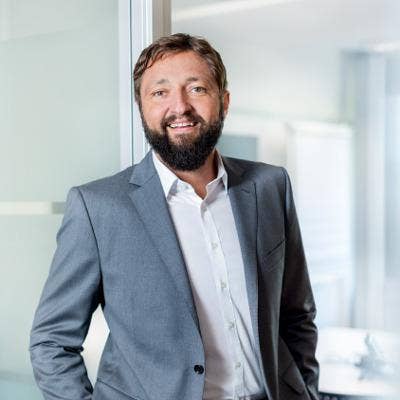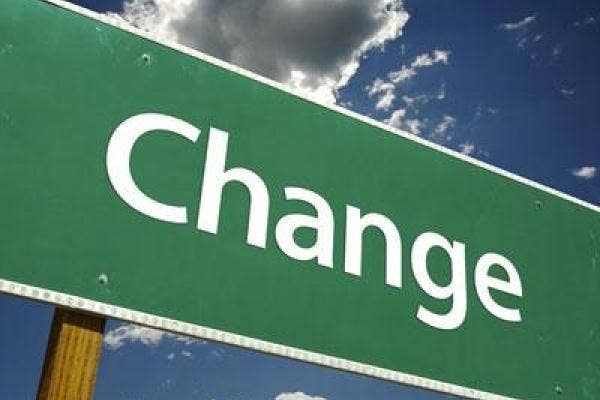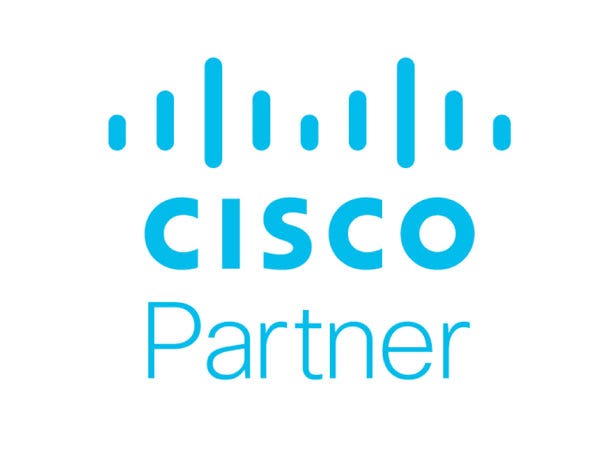Cisco Channel Chief Oliver Tuszik On New EMEA Post, His Potential Successor And How Channel Is Part Of Every Cisco Leader’s ‘DNA’
‘At Cisco, every sales leader is also a partner leader. It’s the DNA of the company. ... You can go through all the key positions in the company. They all have been channel leaders. That’s also why me moving on within the company will not create a lot of disruption or changes,’ Oliver Tuszik, Cisco’s channel chief and soon to be head of EMEA, tells CRN.

Tuszik On The Move
Cisco Channel Chief Oliver Tuszik has been at the helm of the Global Partner Organization for four years and 10 months. Now, at the nearly five-year mark, the channel veteran is moving on from his post to tackle his latest opportunity leading Cisco’s Europe, Middle East and Africa (EMEA) region.
Tuszik in his new role is relocating back to his home country of Germany and is succeeding Cisco’s current EMEA President Wendy Mars as of Aug. 1, the same day that Mars is leaving the company to retire.
A longtime friend of the channel, Tuszik has been working with—and for—solution providers for a long time. The networking giant in 2018 named Tuszik senior vice president of global partner sales and routes to market following Tuszik’s previous five years that he spent as vice president and general manager of Cisco Germany after joining the company in 2013. Before that, he spent a decade working for U.K.-based Computacenter, one of Cisco’s largest channel partners, were he was CEO of Computacenter Germany for five years.
Five years in any role seems to be Tuszik’s “magic number,” and the point where he’s ready to hand over the reins and move on to a new challenge, the executive told CRN. But Tuszik isn’t going far. In his capacity as Cisco EMEA leader, he’ll still be deeply involved with Cisco partners. After all, the company does about 90 percent of its business through the channel, he said.
On the day that he announced his new role, Tuszik spent some time with CRN to talk about the new opportunity, what he’s looking forward to, and what partners can expect from Cisco and his yet-to-be-named successor.
What follows are excerpts from the conversation.

Why is now the time for a change and how will you continue to work with partners in your EMEA role?
I believe that after a certain amount of time—and for me, that seems like five years—I think it’s good to get somebody new, not because I would say I’m doing something wrong. But over the five years, you go through different phases. For the first close to a year, you continue to learn and you want to learn before you make a decision. Then you start to build your own strategy and then there is implementation and design that might take another one to two years. Then you have the chance to perform and scale for the next two years, which adds up to a total of five years.
[For partners,] not a lot will change. The only difference is I’ll be in a more operational engagement with our partners, and I will continue to do exactly what I did in my old role. I will ensure that everybody can perform every day and we make it as smooth and as profitable as possible while we are driving the transformation … with security, software and SaaS and focusing more on outcomes and solutions. So, all the things that I built programs for, that I initiated, that I built the enablement for, are the things I’m going to now implement. So, I love this combination—building the strategy and aligning of these elements—now it’s on me to deliver and there’s nothing better than to deliver on your own strategy.

What are you most looking forward to in the new role?
That’s a good question. I’m a sales guy. I’ve always been in sales and most of my roles have been in sales. Running a sales and customer-focused team and driving the daily engagement with our customers and with our partners is what I really love to do. I love the diversity of EMEA. When you look at the different cultures and countries, it goes down from Iceland to South Africa, so the amount of completely different cultures and business models is just simply impressive and that’s what I’m looking forward to. And, of course, I’ve been working all along with EMEA for a long time. I know most if not all of the leaders that we have in Cisco EMEA. I know a lot of the customers, I know, I would say, all of our partners. It’s my home base, despite the fact that I really enjoyed the U.S. and learned a lot here.

As you transition out of the channel chief seat, what do you want partners to know?
We’ve been able to have an exchange that was full of respect and sometimes even tough, but that’s how strong teams work together. Respect for the individual, but always focus on being successful together, so a big thanks for the warm welcome and allowing a German to be part of this. Just the accent might be different from the person on the main stage [at Cisco Partner Summit].
The team is so strong [within] the organization and just keep in mind, at Cisco every sales leader is also a partner leader. It’s the DNA of the company. Chuck [Robbins, Cisco’s chair and CEO] is a former channel leader. So is Jeff [Sharritts, executive vice president and chief customer and partner officer]. You can go through all the key positions in the company. They all have been channel leaders. That’s also why me moving on within the company will not create a lot of disruption or changes. We’re working on a successor, and we have some great talents internal and external. We’re looking for the next person who will continue a lot of things, but also will add some new ideas. The underlying principle is our focus on customer experience and customer success while we keep up the focus on the partner.

How are the needs of EMEA partners unique?
There are not really big differences [compared with the rest of the partner ecosystem]. The one thing that makes a big difference is, of course, the different languages. In most of the countries, you need to have local language capabilities and that makes it a bit more difficult sometimes to scale. Compared with the U.S. where there’s one big market, there might be differences between East and West, but it’s the same language, the same currencies and most of the same tax law. When you go to Europe, you have many countries, of course, but especially when you go down to the East or in some areas in the South, they’re much smaller countries that have a different setup. But as you might know, a lot of the big U.S. partners are also active in Europe and even some of the partners in Europe, like Computacenter, have become very active in the U.S.
In my personal experience over the last 25 to 30 years is that new technology or new business models—that’s usually [adopted] earlier in the U.S. where they are more open to try new technology. But when we look at [EMEA] numbers, that adoption is faster in the U.K. and especially the Nordics are also adopting very fast. In Germany, I’m allowed to say that many times, it takes a bit longer. But when they adopt, they do it with the highest quality and they adopt it 100 percent. I think some of the stuff that I see happening already in the U.S. might be helpful for me and the EMEA team.

What’s your message to your successor?
I would start with perform and transform, which has become a kind of mantra within Cisco because we know that we have customers that depend on us and our partners every single day, every single hour, and so if we don’t deliver, nobody wants to talk with us about the future. So, focus on this platform while you drive the transformation, always having the partner in mind. And also understand that in this age of the partner, our roles are changing. I would assume that the new leader will continue with the things that we’ve been doing, but will also continue to think about: What does it mean to be working with a much more complex partner ecosystem in a time where customers want to get rid of complexity, want to have more flexibility, and especially want to see outcomes and solutions instead of building their own solutions in a world where everything is cloud-driven with managed services and more? That’s a big question. And last but not least, I’m sure that the successor will continue to drive our engagement when it comes to AI not only in our products and solutions, but also more and more how we can use it to drive better data, insight and a more successful, more profitable business.